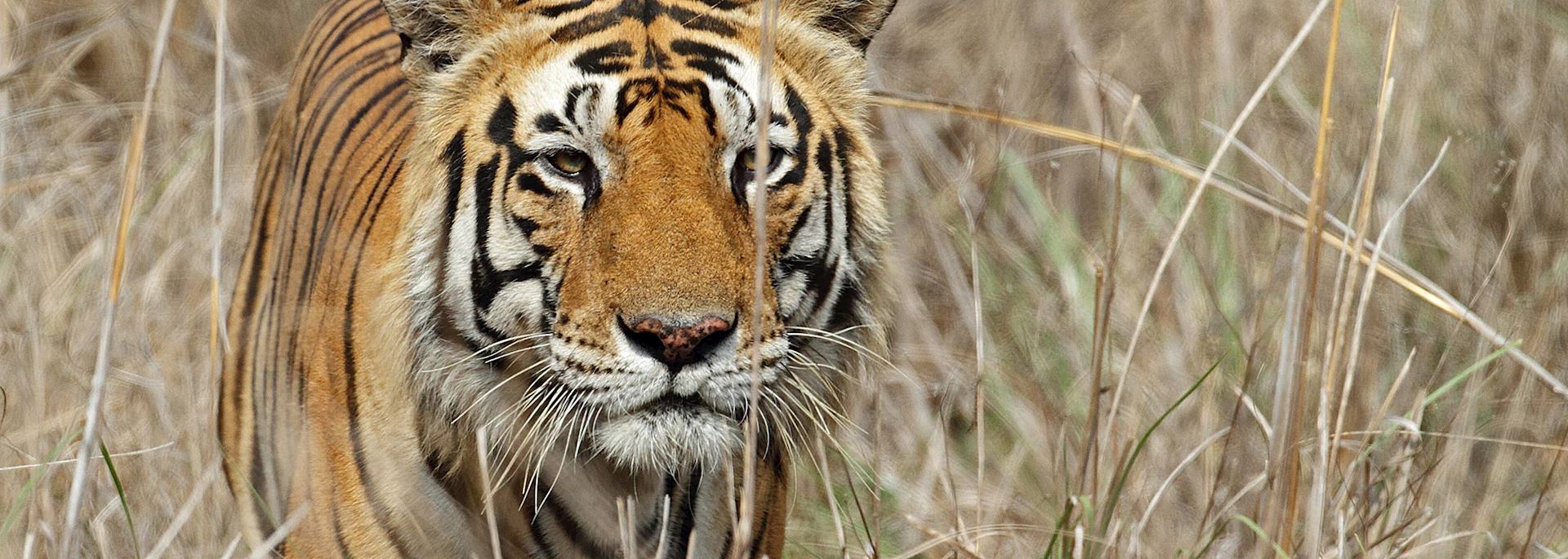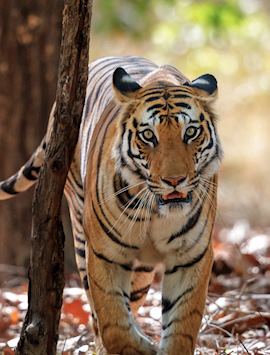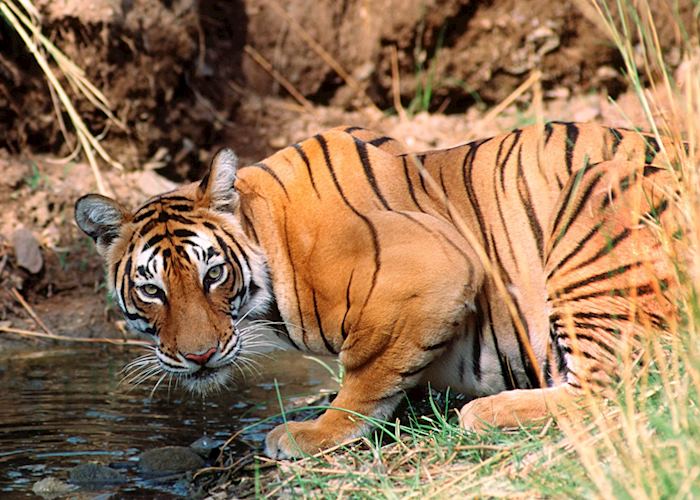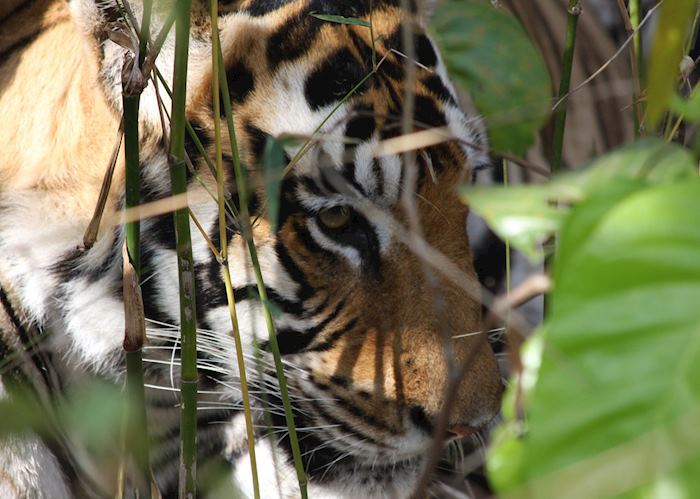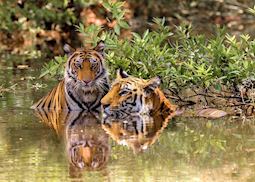Jump to:
Kanha National Park covers over 900 square kilometres and has two entry points — at Kisli and the more remote Mukki gate — with accommodation options at each.
Wildlife
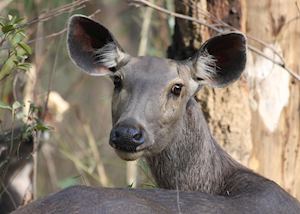 Over 200 bird species and 22 species of mammal, including tiger, leopard, the Indian wild dog and swamp deer, have been recorded and some can be seen over breakfast in the meadows during your morning game drive.
Over 200 bird species and 22 species of mammal, including tiger, leopard, the Indian wild dog and swamp deer, have been recorded and some can be seen over breakfast in the meadows during your morning game drive.
There is a healthy population of tiger and sloth bear although the bear’s crepuscular habits mean it is rarely seen outside the hours of dawn or dusk.
Visiting Kanha
Kanha can be reached from Raipur and Nagpur airports or Jabalpur train station but incorporating visits to the more accessible Bandhavgarh or Pench reduces journey times and enables you to experience the contrasts that each park has to offer.
who's been there

Start planning your tailor-made trip to Kanha National Park by contacting one of our India specialists
-
01993 838 92501993 838 350
- Make an enquiry
Suggested itinerary featuring Kanha National Park
This sample itinerary will give you an idea of what is possible when you travel in Kanha National Park, and showcases routes we know work particularly well. Treat this as inspiration, because your trip will be created uniquely by one of our specialists.
Places near Kanha National Park
- Pench Tiger Reserve 91 miles away
- Bandhavgarh National Park 100 miles away
- Satpura National Park 150 miles away
- Tadoba National Park 160 miles away
- Panna National Park 165 miles away
- Khajuraho 183 miles away
- Orchha 247 miles away
- Varanasi 259 miles away
- Orissa 274 miles away
Photos of Kanha National Park
Our expert guides to exploring Kanha National Park
Written by our specialists from their own experiences of visiting Kanha National Park, these guides will help you make the most of your time there. We share both our practical recommendations and the best ways to appreciate Kanha National Park at its best.
-
India’s wildlife: our safari guide to the central parks ![A mother tiger with her adolescent cub in Bandhavgarh National Park]()
India’s wildlife: our safari guide to the central parks
India’s wildlife: our safari guide to the central parks
India specialist Samantha explains why central India’s national parks are ideal for a wildlife holiday. She recommends how to experience the best tiger safari, and where you might glimpse sloth bears and leopards.
Read this guide
Accommodation choices for Kanha National Park
We've selected a range of accommodation options for when you visit Kanha National Park. Our choices usually come recommended for their character, facilities and service or location. Our specialists always aim to suggest properties that match your preferences.
-
![Singinawa, Kanha National Park]()
Singinawa
Kanha National Park -
![Tented accommodation at Shergarh, Kanha National Park]()
Shergarh
Kanha National Park -
![Bridge leading to the main lounge and dining area, Flame of the Forest]() Responsible ChoiceWe've hand-selected a range of tours and stays across the world that go above and beyond to be a force for good by supporting local businesses, educating staff, challenging local norms, or promoting conservation and biodiversity efforts. Your Responsible Choice helps increase the positive impact of your trip.
Responsible ChoiceWe've hand-selected a range of tours and stays across the world that go above and beyond to be a force for good by supporting local businesses, educating staff, challenging local norms, or promoting conservation and biodiversity efforts. Your Responsible Choice helps increase the positive impact of your trip.Flame of the Forest
Kanha National Park

